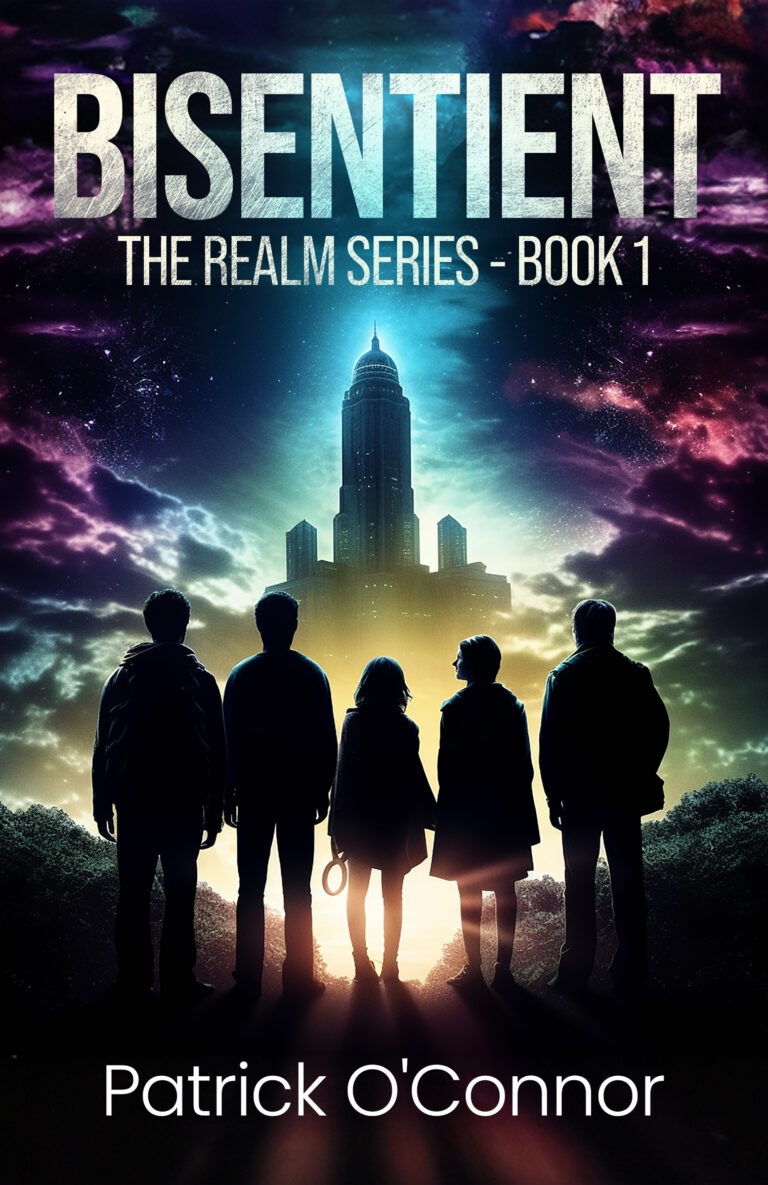Where do we go when we dream? In Patrick O’Connor’s BISENTIENT, dreamers go to a lush kingdom that looks like medieval Europe and runs on powerful magic. All sleepers visit the Realm, but only a few “bisentient” beings can travel between the two states and retain awareness. Gail Hartston, one of the Realm’s most powerful figures, lies in a coma in the waking world. Journalist Zach becomes bisentient after a secret government agency implants an experimental chip in his head. Creepy occultist Grobus gains the ability to travel to the Realm through arcane rituals, while the skill comes naturally to Mason Plater.
Readers are treated to international intrigue and backroom politics before they reach the Realm. Once they arrive, O’Connor creates an immersive but troubled world; the Realm is under attack by a malevolent supernatural force. Gail enlists Zach and Mason to join her side in the coming conflict, but real-world problems threaten to sideline Gail’s dream warriors: shadowy government agencies, cryptic cults, and a powerful religious zealot who is building a doomsday machine.
A lot is going on here. The doomsday machine is based on instructions left by ancient aliens, and Mason’s love interest, Molly, must infiltrate the religious cult’s underground lair (actually an abandoned military base) so the shadowy government agencies can save the (non-dream) world. Meanwhile, Grobus has stolen a lock of Gail’s hair, which allows the occultists to manifest powerful forces against her in the Realm.
O’Connor has a smooth, dialogue-driven style and a good sense of pacing. However, he casts his net too wide, grabbing tropes from various genres—science fiction, fantasy, superheroes, fairy tales, and world mythology—and combining them in awkward ways (it’s nice to see the Greek harpies and Japanese nue working together, though). Even the characters seem confused by what’s at stake: “We’re what the Illuminati would aspire to be, and what do we have to hold on to? What do we really know? Millions, maybe billions spent scrambling to confront what? Something we can’t describe and daren’t try to.”
BISENTIENT begins with a solid SF premise: new technology allows science to access the thoughts of dreamers. Then the story shifts toward being a political thriller, as right-wing extremist Reverend Ethan Daniels vies for the U.S. Presidency while secretly building an ancient alien death machine. The introduction of Grobus and his candle-burning, spell-casting cult offers a more extreme version of Daniels’s organization and adds the witchy vibe of a Fritz Lieber novel.
The dream realm, as O’Connor depicts it, is both fascinating and frustrating. It’s filled with others who don’t realize they’re dreaming. But why is the Realm stuck in a Lord of the Rings and Games of Thrones-style setting where the most advanced weapons are swords, spears, and magic spells? The magic in BISENTIENT undermines the plausible science introduced at the beginning of the novel. Once characters can shoot magical bolts out of their hands, the story has crossed over to the Marvel Universe. This is fine, but it’s jarring to read an SF political thriller where Wonder Woman shows up in the last act to battle demons and orcs.
BISENTIENT feels as influenced by video games and Marvel movies as it is by Issac Asimov, J.R.R. Tolkien, or George R.R. Martin: “He was pretty handy in World of Warcraft but he doubted those skills would be much help against an alien entity bent on destroying humanity.” Yet O’Connor does a good job of wrangling these disparate plot points together and getting them across the finish line.
BISENTIENT by Patrick O’Connor is an uneven blend of science fiction, fantasy, politics and the occult that works best as a cinematic action-adventure tale.
~Rob Errera for IndieReader


